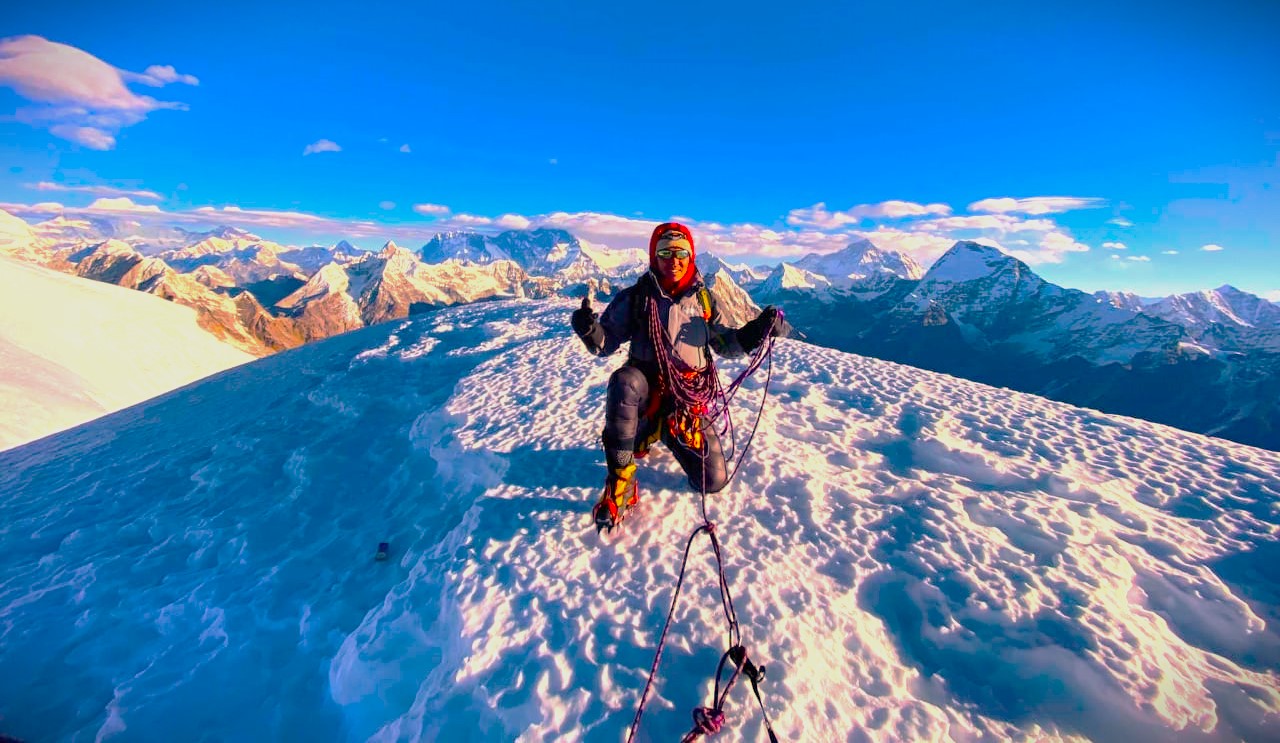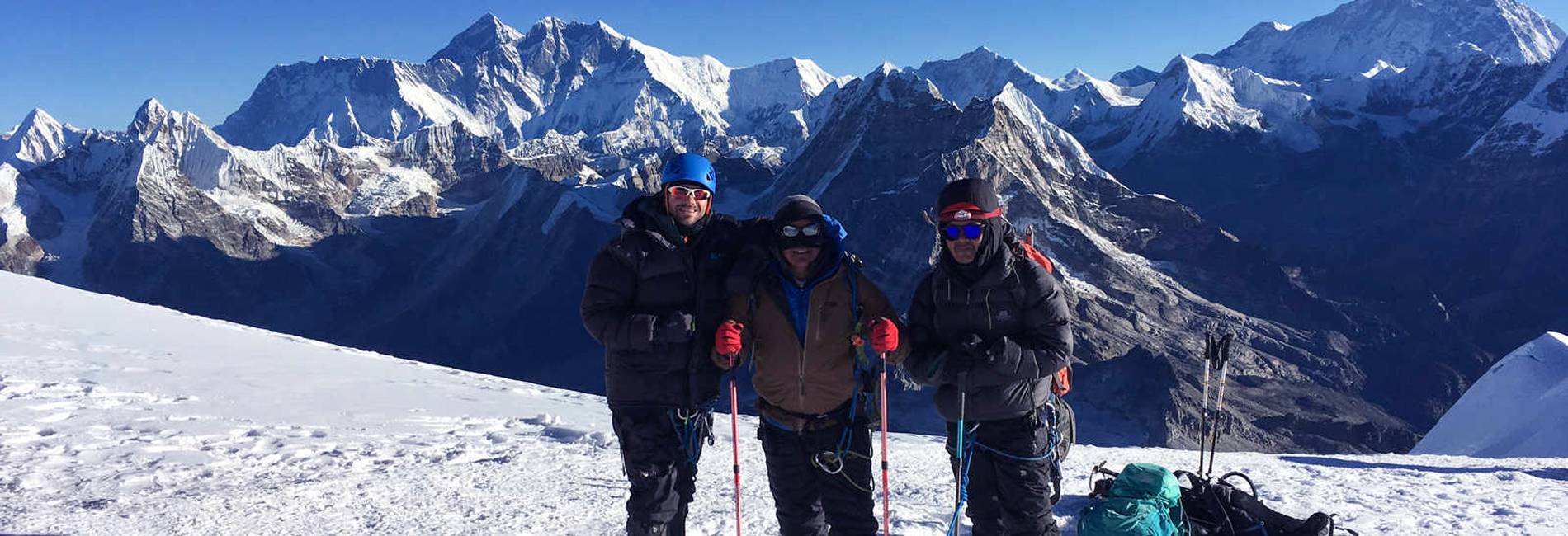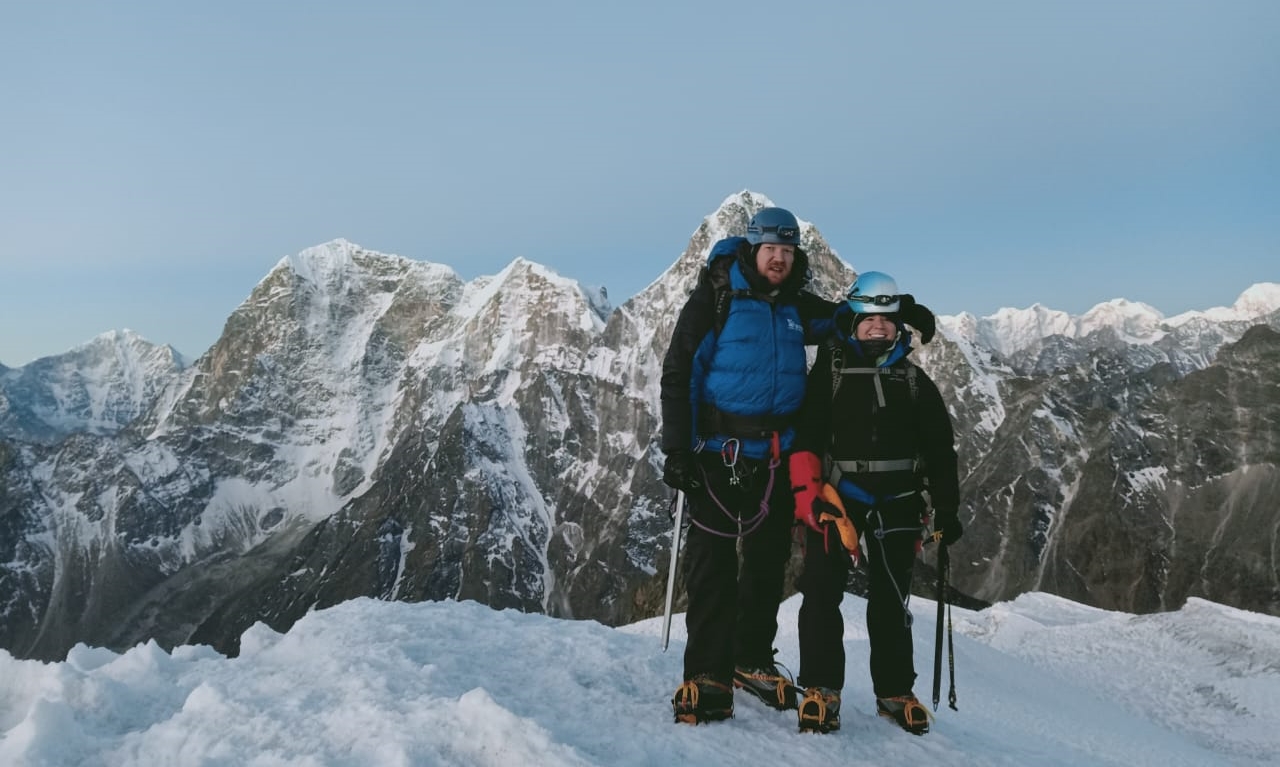26th August, 2025

Feb 25, 2024
Mera Peak Climbing - An Exclusive Guide
Nestled in the heart of the Himalayas, Mera Peak stands tall as one of Nepal's most coveted trekking peaks. Offering a perfect blend of adventure and breathtaking scenery, Mera Peak is a dream destination for mountaineers seeking a taste of high-altitude climbing. In this comprehensive guide, we will delve into every aspect of Mera Peak climbing, from the route to altitude sickness, to help you embark on this unforgettable journey.

MERA PEAK CLIMBING
Mera Peak Climbing is an exhilarating adventure in Nepal that gives you an opportunity to reach the summit of Mera Peak at more than 6400m above sea level. Actually, it is the highest climbing (w...
Mera Peak - The Best Trekking Peak
Mera Peak, standing at an impressive 6,476 meters (21,247 feet), is renowned for being the highest trekking peak in Nepal. Its strategic location in the Khumbu region offers unparalleled views of some of the world's highest peaks, including Everest, Lhotse, Makalu, and Cho Oyu. The trek to Mera Peak combines the thrill of high-altitude climbing with the beauty of the remote Hinku Valley, making it a must-do for adventure enthusiasts.
Mera Peak Climbing Route
The standard route for climbing Mera Peak begins with a scenic flight from Kathmandu to Lukla, followed by a trek through picturesque Sherpa villages and dense forests. As you ascend higher, the landscape transforms into a rugged alpine terrain, eventually leading to the base camp at 5,300 meters (17,388 feet). From the base camp, climbers tackle the steep snow slopes of the summit pyramid, culminating in a rewarding panoramic view from the summit.
How Hard Is it to Climb Mera Peak?
While Mera Peak is classified as a non-technical trekking peak, it presents its own set of challenges due to the high altitude and demanding terrain. Climbers are required to have a good level of physical fitness and prior trekking experience to tackle the long days of hiking and the final summit push. Acclimatization plays a crucial role in ensuring a successful ascent, as the altitude can take a toll on even the most seasoned climbers.

MERA PEAK CLIMBING 17 DAYS
This is an excellent opportunity to climb Nepal’s highest peak without having to obtain a permit (6,476m/21,190ft). From the summit, you will have stunning views of several 8000m plus peaks, such as E...
Altitude Sickness
Altitude sickness, also known as acute mountain sickness (AMS), is a common concern for climbers attempting peaks like Mera. Symptoms can range from mild headaches and nausea to more severe conditions like high-altitude pulmonary edema (HAPE) and high-altitude cerebral edema (HACE). Proper acclimatization, staying hydrated, and recognizing the signs of altitude sickness are essential for a safe and enjoyable climb.
Terrain
The terrain on the Mera Peak climbing route varies from lush valleys and rhododendron forests to rugged moraines and glaciated slopes. Climbers will encounter rocky trails, snow-covered ridges, and crevassed glaciers as they make their way towards the summit. The diverse landscape offers a unique blend of challenges and rewards, making every step towards the peak a thrilling adventure.
Mera Peak Climbing Cost
The cost of climbing Mera Peak can vary depending on factors such as the trekking agency, itinerary, group size, and inclusions. On average, the cost of a guided Mera Peak expedition ranges from $3000 to $6000 per person. This cost typically covers permits, transportation, accommodation, meals, climbing equipment, and the services of experienced guides and porters.
Mera Peak Climbing Season
The best time to climb Mera Peak is during the pre-monsoon (spring) season from March to May and the post-monsoon (autumn) season from September to November. These months offer stable weather conditions, clear skies, and optimal climbing conditions. Winter climbs are also possible, but the cold temperatures and snowfall make it a more challenging endeavor.

MERA PEAK SUMMIT 10 DAYS
This is a chance to go climbing without the necessary permits that most climbing expeditions require in Nepal. Mera Peak fits the bill perfectly and at (6,476m/21,190ft) you will have spectacular view...
Mera Peak Weather
The weather on Mera Peak can be unpredictable, with conditions changing rapidly in the high mountains. Climbers can expect cold temperatures, strong winds, and occasional snowfall, especially at higher altitudes. It is essential to pack appropriate clothing and gear to stay warm and dry throughout the expedition. Checking weather forecasts and staying informed about local conditions is crucial for a safe climb.
Mera Peak Climbing Preparation
Proper preparation is key to a successful Mera Peak climb. This includes building endurance through regular cardio and strength training, as well as practicing hiking with a loaded backpack to simulate the conditions on the mountain. Acquiring basic mountaineering skills such as using crampons, ice axes, and ropes is also recommended for tackling the technical sections of the climb.
Accommodation and Meals
During the Mera Peak expedition, climbers stay in teahouses and camping sites along the route. Teahouses offer basic accommodation with shared facilities, while camping provides a more remote and immersive experience. Meals typically consist of hearty Nepali and Western dishes, designed to fuel climbers for the day's activities. Special dietary requirements can be accommodated with prior notice.
Kathmandu Lukla Flight
The flight from Kathmandu to Lukla is an essential part of the Mera Peak expedition, providing access to the starting point of the trek. The flight offers stunning views of the Himalayan range and takes approximately 30 minutes to reach Lukla's Tenzing-Hillary Airport. Due to the airport's short and sloping runway, flights are subject to weather conditions and occasional delays.
Dealing with Altitude Sickness
Altitude sickness is a real concern for climbers attempting peaks like Mera, given the rapid gain in elevation. Symptoms of altitude sickness can vary from mild discomfort to life-threatening conditions, so it is crucial to acclimatize gradually and recognize the signs of AMS. Drinking plenty of water, avoiding alcohol and smoking, and following a conservative ascent schedule are key strategies for preventing altitude-related illnesses.

MERA PEAK CLIMBING 15 DAYS
The Mera Peak Expedition is a 15-day trek that takes you through some of the most stunning landscapes and challenging trails in Nepal. Mera Peak is the highest trekking peak in Nepal, standing at 6,47...
Preparing Necessary Gear & Equipment
Packing the right gear and equipment is essential for a successful Mera Peak climb. This includes high-quality trekking boots, insulated clothing, a down jacket, a sleeping bag rated for cold temperatures, a headlamp, sunglasses, sunscreen, and a first aid kit. Climbers should also carry climbing equipment such as crampons, ice axes, ropes, and harnesses for the technical sections of the climb.
Choosing the Best Itinerary
Selecting the right itinerary is crucial for a safe and enjoyable Mera Peak climb. Most expeditions include acclimatization days, training sessions, and a gradual ascent to the summit. It is essential to choose a reputable trekking agency with experienced guides who can provide the necessary support and guidance throughout the expedition. Customized itineraries can also be arranged to suit individual preferences and fitness levels.
Physical Conditioning
Physical conditioning is paramount for climbers attempting Mera Peak, as the trek involves long days of hiking and challenging terrain. Building cardiovascular endurance through activities like running, cycling, and hiking is essential for tackling the high altitudes and steep gradients. Strength training exercises targeting the legs, core, and upper body can also help improve overall fitness and prepare for the demands of the climb.
Most Popular 6000 Meters Peak In Nepal
Mera Peak stands out as one of the most popular 6000-meter peaks in Nepal, attracting climbers from around the world seeking a taste of high-altitude adventure. Its accessibility, stunning views, and non-technical climbing make it an ideal choice for mountaineers looking to push their limits and experience the thrill of summiting a Himalayan peak. The sense of accomplishment and the breathtaking vistas from the summit make Mera Peak a truly rewarding climb for those willing to take on the challenge. HERE ARE SOME PEAKS

ISLAND PEAK CLIMBING
Sherpa Expedition & Trekking (Est.1977) are pleased to announce FOR ADVENTURERS the most awesome, exhilarating & unforgettable climbing and treks on offer anywhere today!...
In conclusion, Mera Peak offers a unique blend of adventure, beauty, and challenge, making it a premier destination for climbers seeking a high-altitude experience in the Himalayas. With proper preparation, acclimatization, and a spirit of adventure, conquering Mera Peak can be a transformative journey that leaves lasting memories and a sense of accomplishment. Whether you're a seasoned mountaineer or a first-time climber, the allure of Mera Peak beckons, promising an unforgettable expedition into the heart of the world's highest mountains.

LOBUCHE PEAK CLIMBING
Lobuche East (6,119m/20,075ft), set in Nepal's stunning Khumbu on the Nepalese side of Everest.The best time to go trekking in Nepal is in Autumn (September-November) and in...
Any Questions? Let Us Know.
Recent Posts
17th June, 2025


















